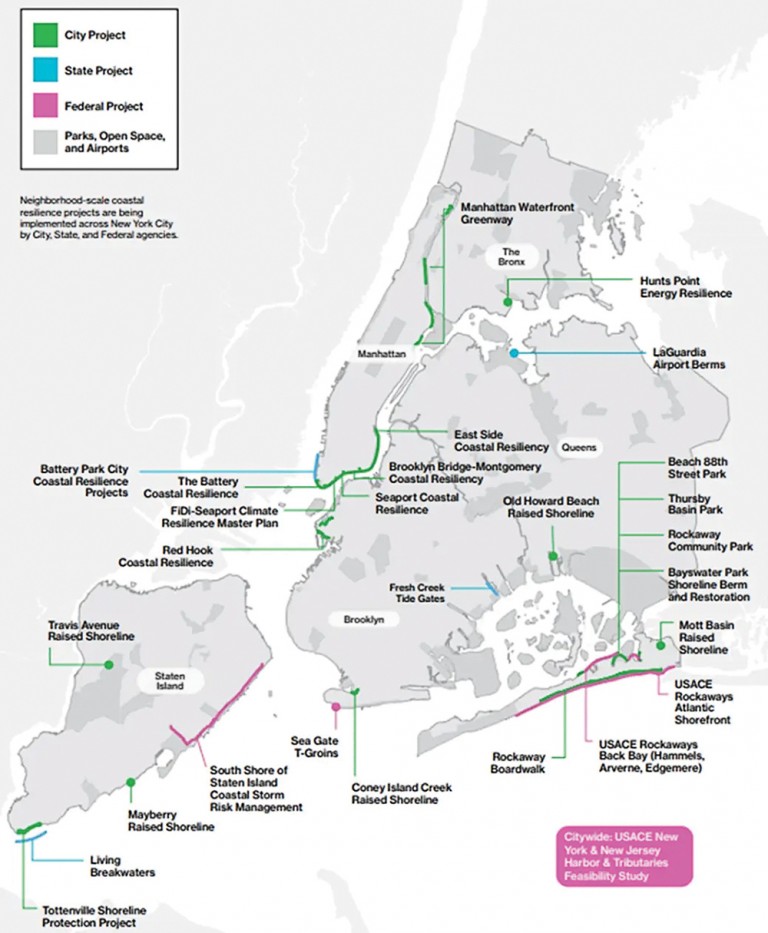By Forum Staff
Mayor Eric Adams on Monday announced the groundbreaking of Battery Coastal Resilience, a $200-million component of the administration’s overall Lower Manhattan Coastal Resiliency strategy.
On Monday, Adams also called on the federal government to create a regular, recurring source of federal funding for coastal infrastructure that would enable New York City to complete critical resiliency projects. For every $1 invested in coastal infrastructure projects, $6 is saved in recovery costs. A regular, recurring funding program would help New York City more reliably access federal funding for crucial projects to protect more New Yorkers from climate change hazards.
“My district knows all too well the need for increased resiliency to protect against future weather events,” said Councilwoman Joann Ariola (R-Ozone Park), chairwoman of the Committee on Fire and Emergency Management. “This project will go a long way towards protecting the people of Manhattan, and I hope that it expands to safeguard other portions of the city as well.”
According to the New York City Panel on Climate Change, coastal NYC is experiencing higher rates of sea level rise than the global average. NPCC projects, at the higher end, 23 inches of sea level rise by the 2050s and 65 inches of sea level rise by 2100. The Battery project will protect New Yorkers from that sea level rise and will include the reconstruction of the deteriorating wharf; preservation and enhancement of the park’s character, gardens, and community amenities; memorials and historic monuments; adaptability to future passenger ferry needs, universally accessible design principles; and more.
According to the Adams administration, the projects in The Battery are part of over $1.7 billion in Lower Manhattan Coastal Resiliency climate adaptation capital investments. These investments include the $350 million Brooklyn Bridge-Montgomery Coastal Resilience, which began construction in fall of 2022. Construction is also advancing on the $1.45 billion East Side Coastal Resiliency project, with the first two public areas opening in 2022 and 2023, and other coastal projects are in progress in all five boroughs. For example, as part of the city’s citywide efforts to reduce coastal risk, the administration recently completed construction on the Old Howard Beach Street project, which will protect New Yorkers from what would have been routine tidal flooding in 2050.
“Resiliency infrastructure is key to New York City’s very survival: sea levels may rise as much as 5.4 feet by the end of the century, threatening the 20 percent of our city lying in a floodplain,” said Assemblywoman Jenifer Rajkumar (D-Woodhaven). “The $200 million Battery Coastal Resilience project, part of the greater Lower Manhattan Coastal Resiliency, is a cornerstone of our plan to withstand and recover from increasingly intense storms. This project will utilize an enhanced drainage system, salt-tolerant trees and plantings, and permeable pavers to safeguard 100,000 of our fellow New Yorkers from the devastation of climate change. We will also use this project as an opportunity to rebuild the wharf, beautify the park, and make it inviting and accessible for all. This plan is advancing our goal of making New York City.”

